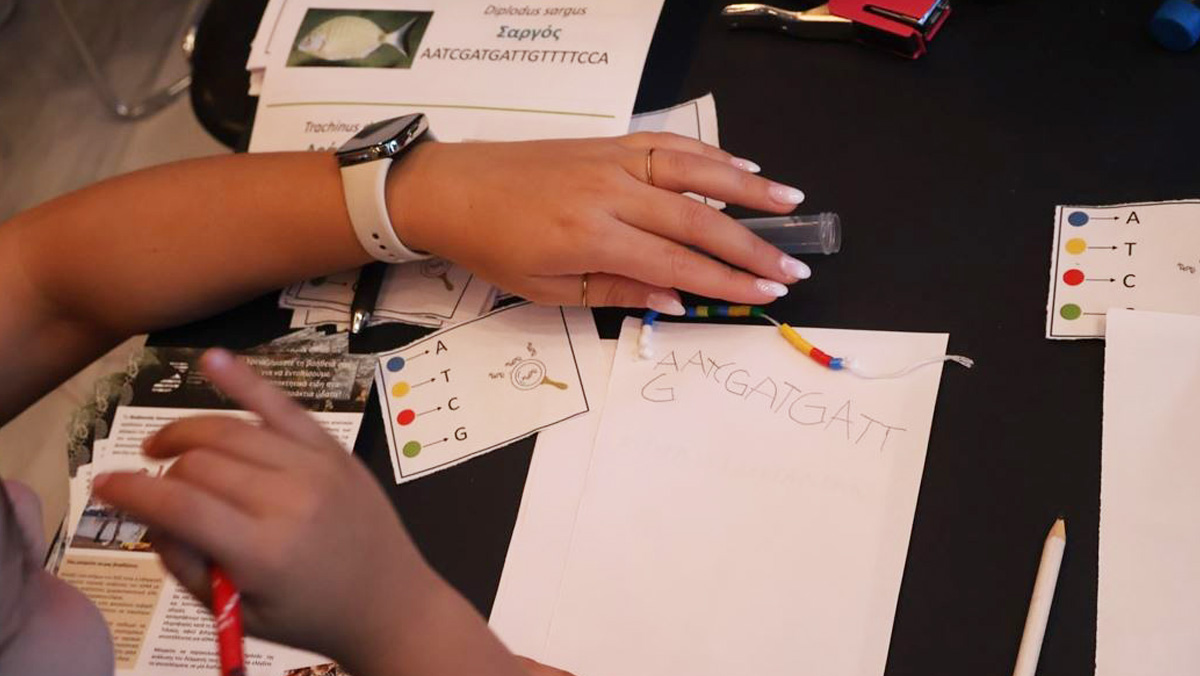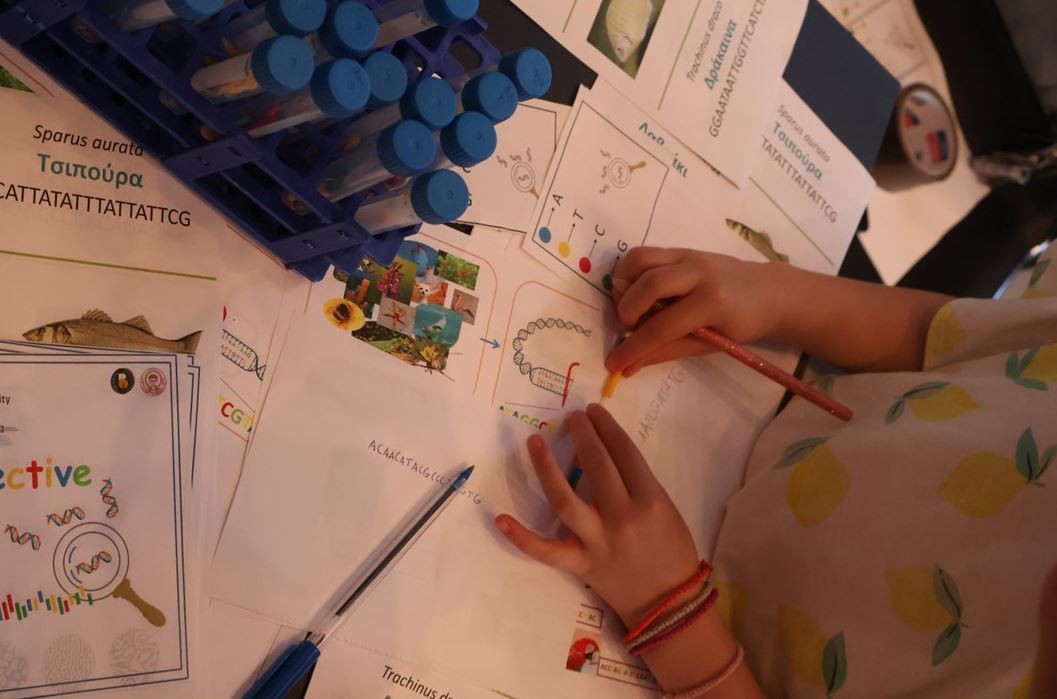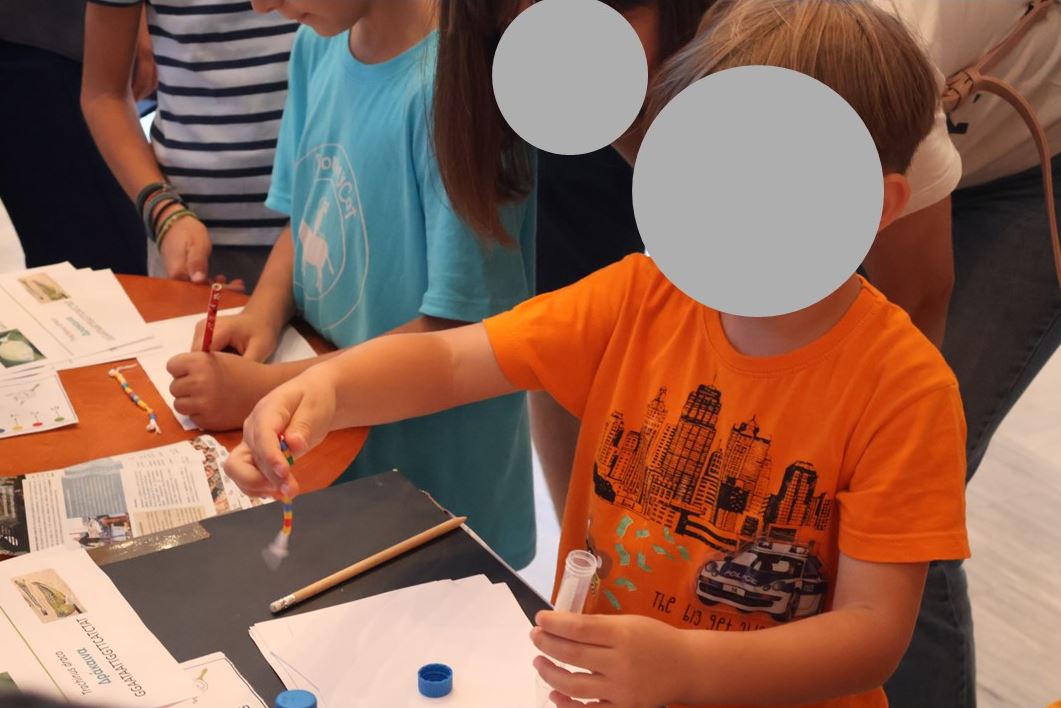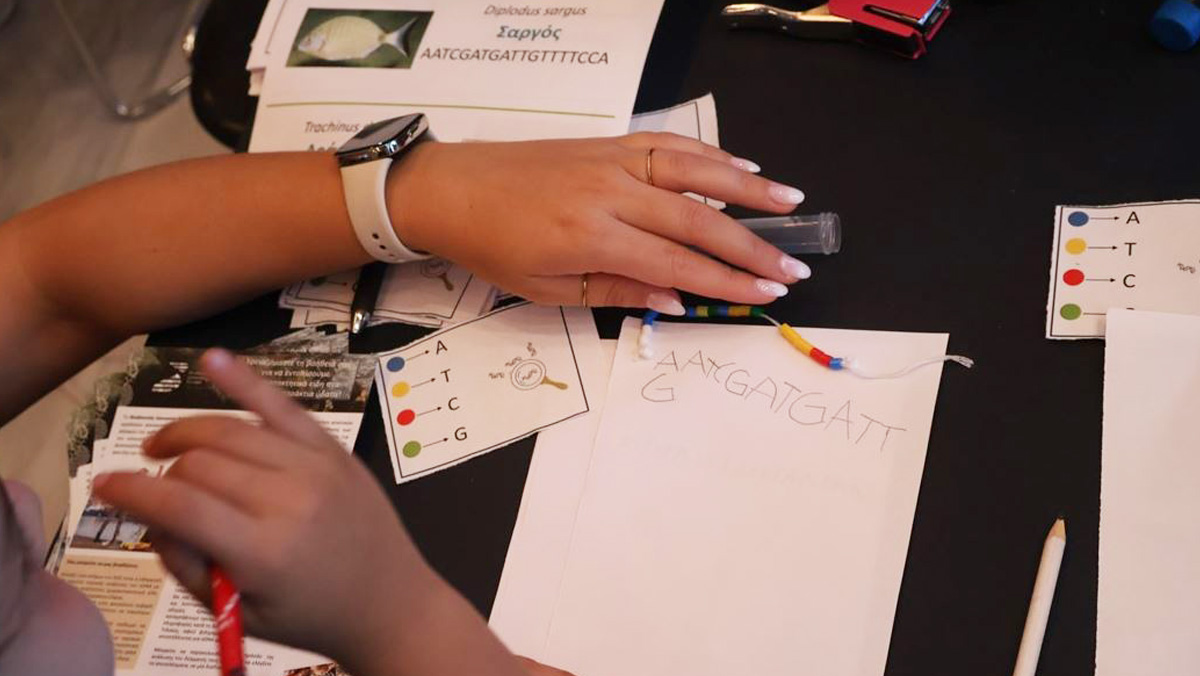The use of eDNA for the biomonitoring of non-indigenous species
School of Biology of the Aristotle University of Thessaloniki and CERTH (Centre for Research & Technology, Hellas)
Opera House of Thessaloniki (Greece), 27 September 2024
Recently, the School of Biology of the Aristotle University of Thessaloniki (AUTh) successfully participated in the actions under the Researcher’s Night, on Friday 27 of September in Thessaloniki. Approximately 5,000 people of different ages visited the Opera House of the city to attend this pan European research feast. More than 200 people stopped by the BGE booth, where they learned about the program and the use of eDNA technology for biomonitoring non-native species.
Overview of the event
BGE (Biodiversity Genomics Europe) members of AUTh and Biology school students, members of the Biodiversity AUTh group, presented the BGE project and the efforts of all the BGE members across Europe to enhance the use of genomics in the service of biodiversity. The visitors were informed about the aim of the project to enrich the reference databases for the European eukaryotic species. Furthermore, the importance of monitoring biodiversity via genomic methods, particularly the introduction and the establishment of invasive species which adds to the biodiversity decline were also communicated to the audience (see images of the two flyers below, under ‘Feedback summary’).
As part of the program’s outreach, children aged 4-16 were introduced to using eDNA to identify indigenous and non-indigenous species. A quick game was organized according to which children used a small fragment of a DNA barcode to search for one of eight teleost species chosen for the activity. Six of the species occur naturally in Greece and 2 of the species are characterized as non-indigenous ones. Over 200 children participated in the game, they observed pictures of the selected species and finally they were given an “eDNA detective certificate”.
The audience got a comprehensive exploration of biodiversity and its significance, and especially of how their participation as citizen scientist to this initiative is vital.

More than 200 people stopped by the BGE booth, where they learned about the program and the use of eDNA technology for biomonitoring non-native species. Photo by: BGE
Goals
- Introduction to the up-to-date situation regarding the global biodiversity crisis: Visitors of the BGE bench in the festival were shortly informed of how the DNA tools can help us toward the identification methods, and how these may assist in the tackling of the ever-increasing biodiversity loss.
- Highlighting the importance of biodiversity research and the BGE Project Goals: Participants were introduced to the overarching goals of the BGE project, which aims to address the pressing issue of biodiversity loss.
- Highlighting the role of non-indigenous species to the biodiversity crisis: Attendees gained insights into why the spread of non-indigenous species to new areas far from their original distribution range is recognized as one of the major anthropogenic impacts that threaten ecosystems at the level of biodiversity and function. Typical examples of marine non-indigenous species recorded in Greek seas were also presented.
- Practicing the use of eDNA for biomonitoring (for children): Children were informed of how using a DNA sequence found in the water may reveal the presence of species, some of which might be non-indigenous.
Content
17.00 Start of the Researcher’s Night festival, at the venue location. Citizens’ tour across different booths, including the AUTh-BGE booth, where they are informed of the projects’ goals, what is called a “non-indigenous species” and how eDNA techniques serve the biomonitoring of the non-indigenous species. Short eDNA play for children.
22.00 The end of the Researcher’s Night festival.
Feedback summary
Attendees showed great interest in the process, which was a first-time experience for them, but most importantly, they realized the invaluable help of citizens to help us build the map of European biodiversity.
Header: More than 200 people stopped by the BGE booth, where they learned about the program and the use of eDNA technology for biomonitoring non-native species. Images by: BGE
















